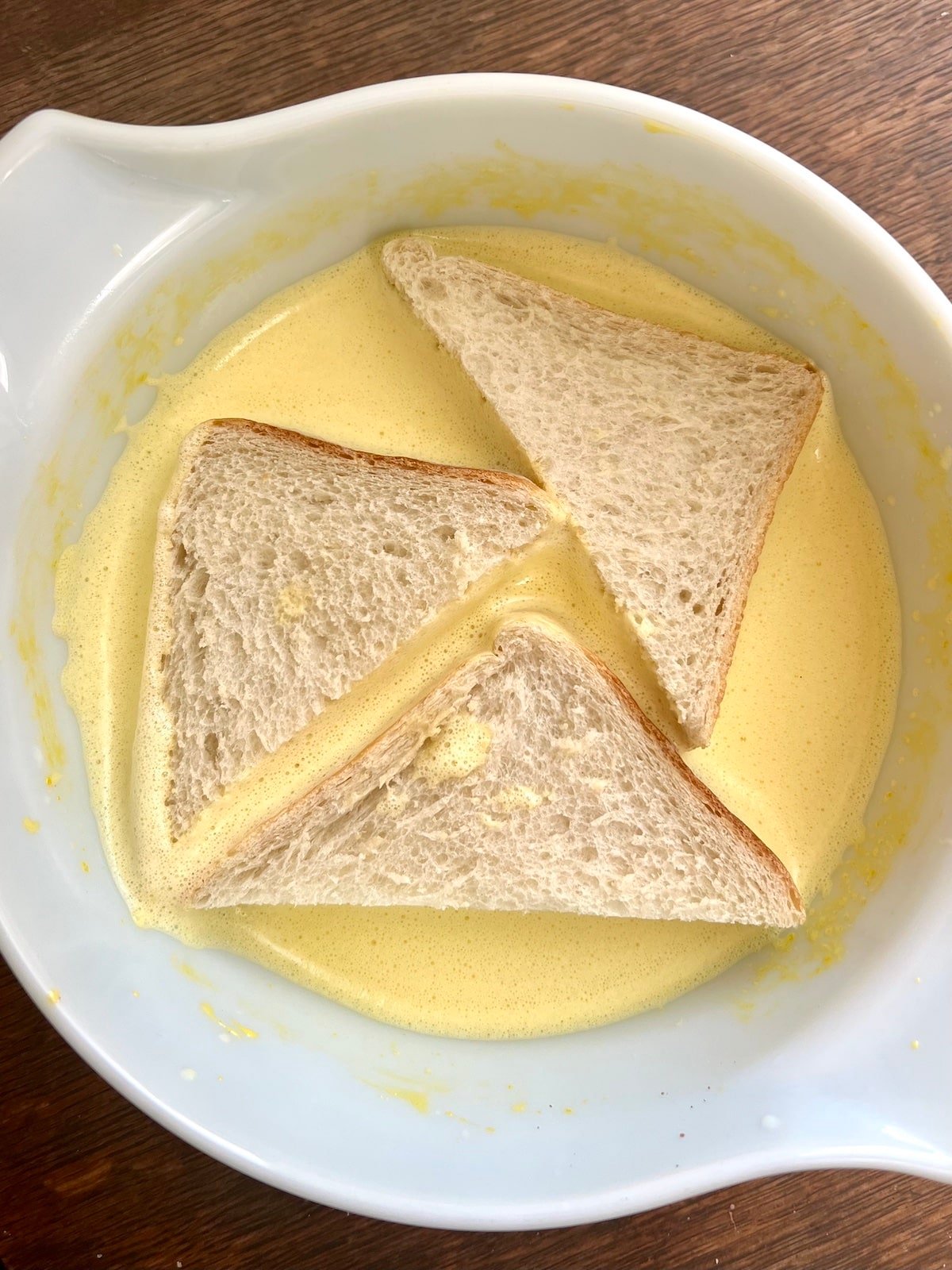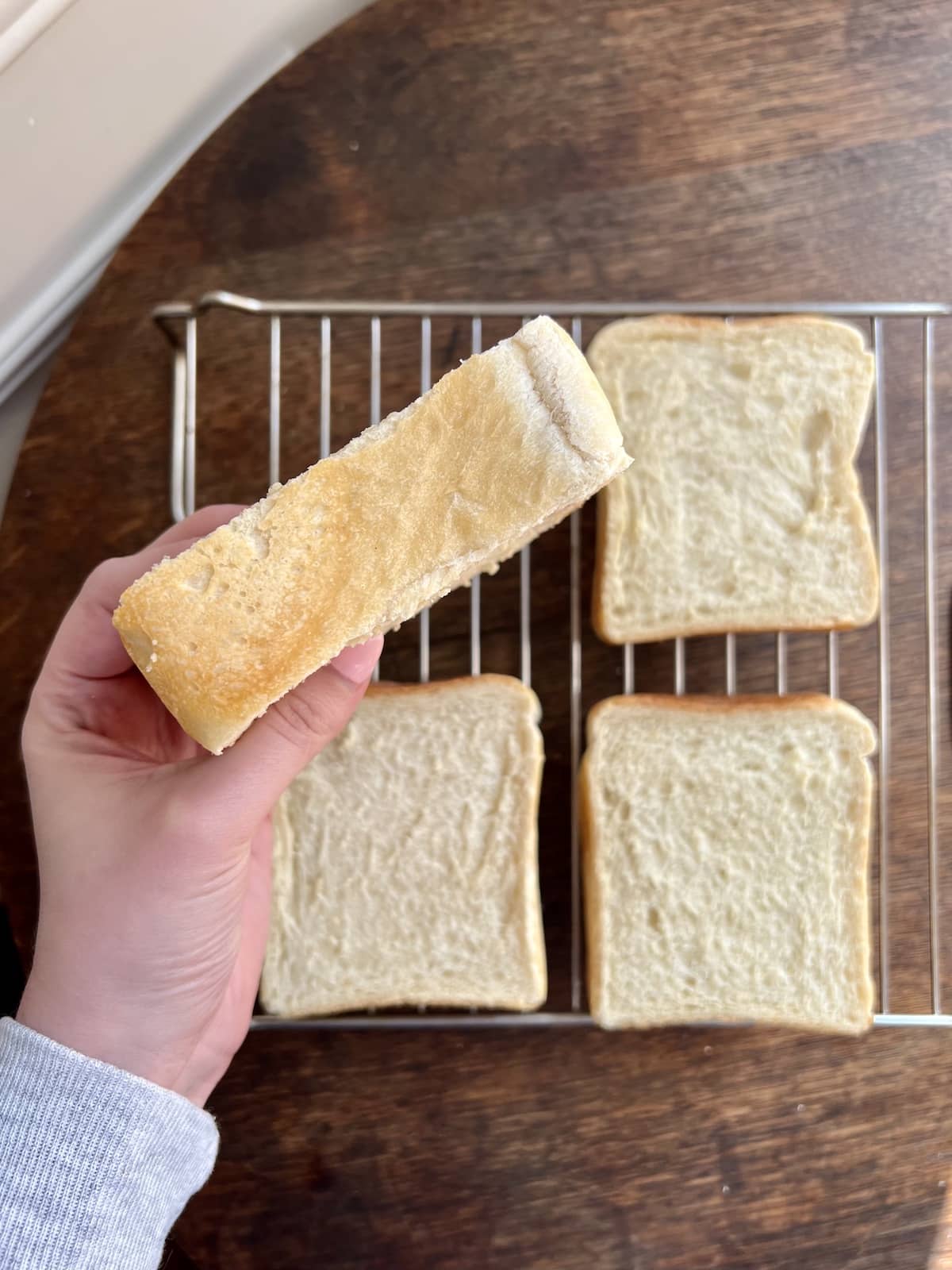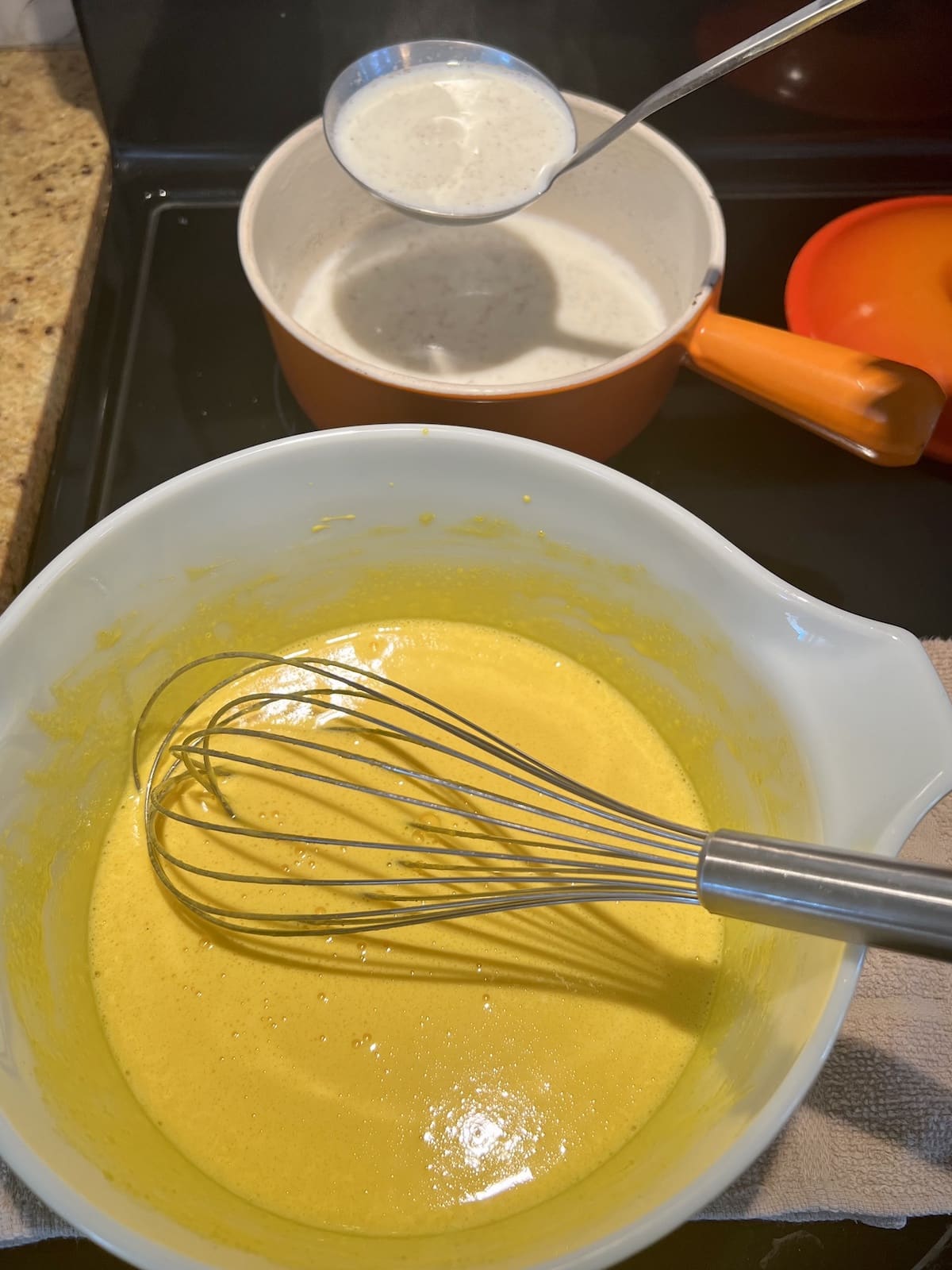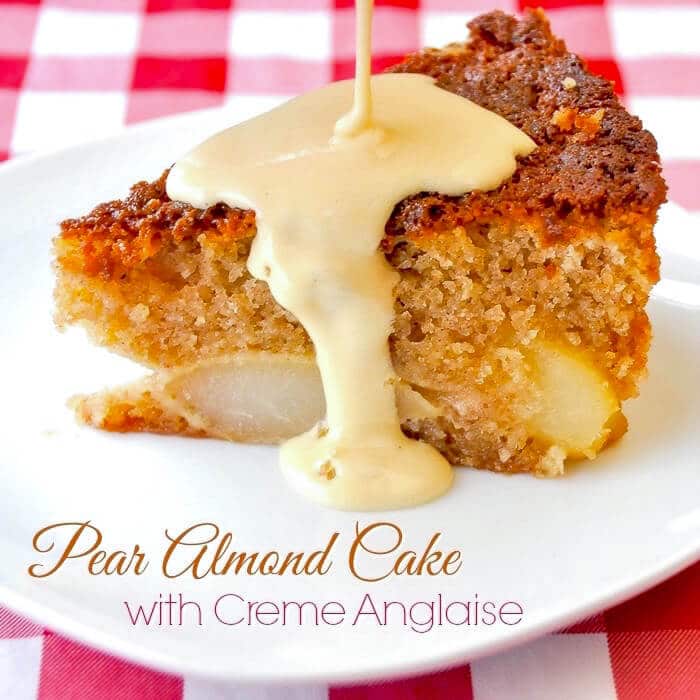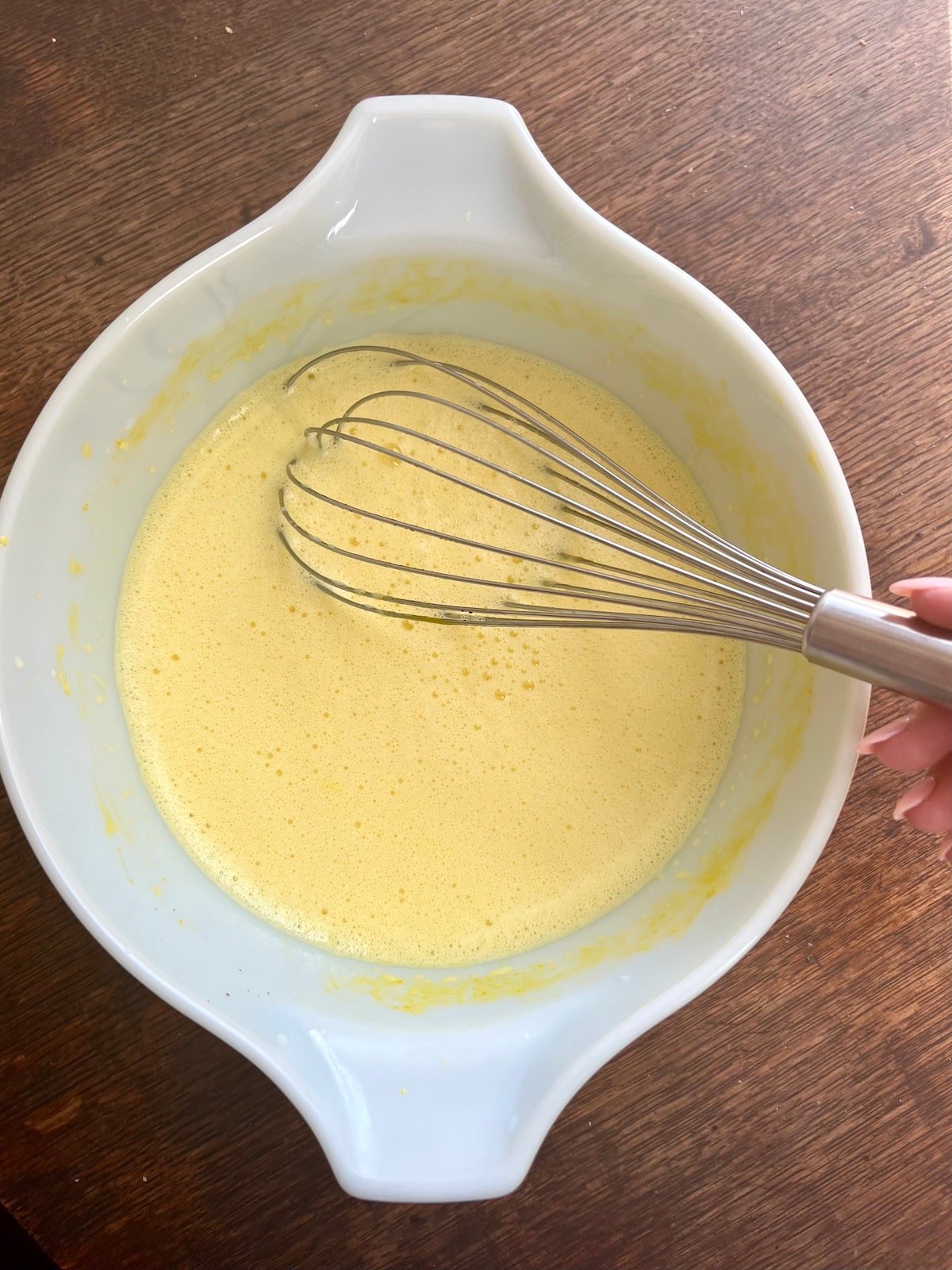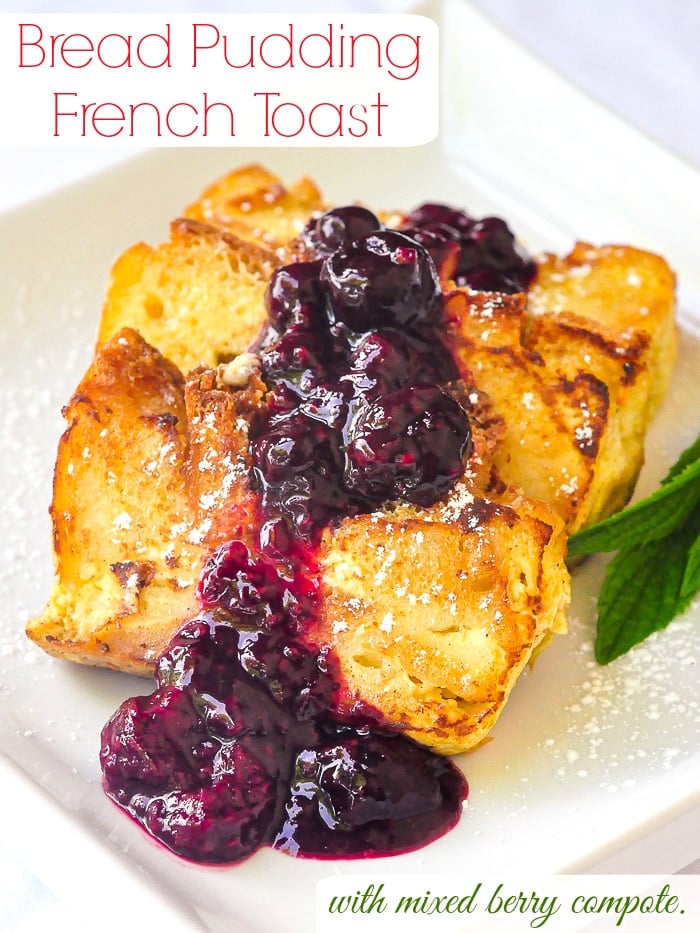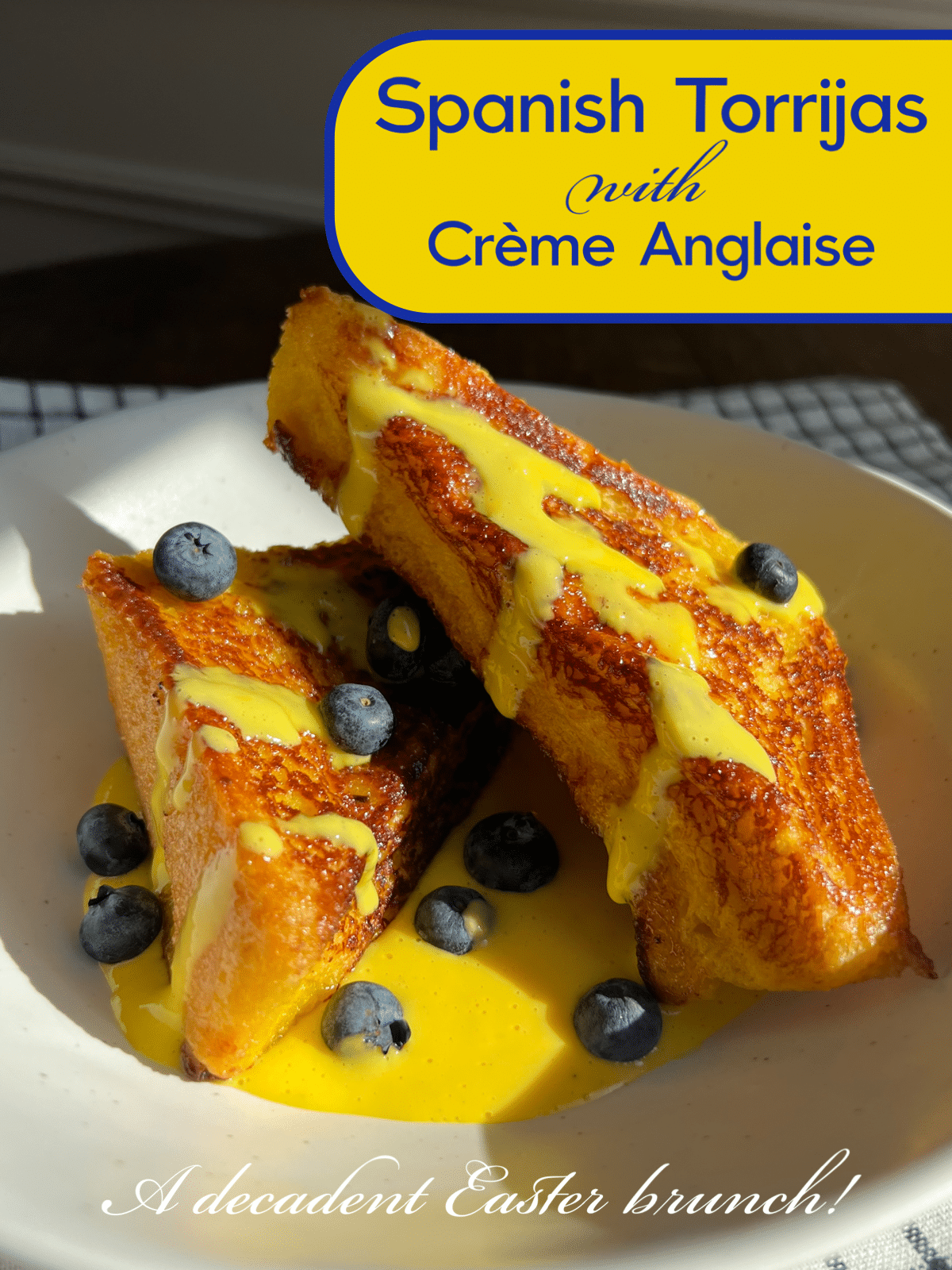Spanish Torrijas with Creme Anglaise. Spain’s answer to French Toast, often served at Easter. The egg mixture used for soaking the bread is turned into a beautiful creme anglaise serving sauce. A decadent and delicious Easter brunch!
Hi folks, Olivia here! Can you believe Easter is just around the corner again?
To me, Easter is a fantastic opportunity for a fabulous brunch. It’s the perfect time to get together and pull out all the stops for an indulgent Easter Sunday morning.
In developing a new Easter brunch recipe, I was interested in learning about recipes eaten this time of year in other parts of the world, which is how I came across torrijas.
An Easter favourite in Spain.
Torrijas are Spain’s answer to french toast or pain perdu. Although it’s popular year-round eaten as a brunch or dessert, it’s historically made during the week of Easter as well.
Some folks think this was because of an abundance of bread baking during lent, so stale bread needed to be used up.
Traditional torrijas, like many similar recipes, were born out of necessity using common ingredients. Historically you would find it made with eggs, honey and milk – or wine or sherry in its place. In Spain, many fry this dish in olive oil.
The Crème Anglaise method.
This version I’m sharing with you today is not a truly authentic version, but more of a decadent, inspired take on the dish. The most interesting thing about this recipe is the crème anglaise method, which actually reduces any food waste. I see that as a testament to the roots of this dish.
I revisited our Rock Recipes Pear Almond Cake with Crème Anglaise to develop this torrijas recipe.
Crème Anglaise is simply a custard sauce made with milk, egg yolk, sugar and vanilla. Once the custard has been initially combined, I soak the bread at that point. Then, while the torrijas cook, the leftover crème goes back on the stovetop for just a couple minutes. It creates a perfect serving sauce for the dish.
The result is truly some of the best “french toast” I’ve ever had. The thick cut bread is pudding-like on the inside, but caramelized and crispy on the inside, thanks to a little extra sprinkle sugar in the frying process.
The crème anglaise is creamy, light and delicate. I think these torrijas are lovely served with berries. Ripe pears or peaches would also be delicious.
If you’re looking for something new to try this Easter, this decadent brunch recipe is sure to be a winner. Really, it’s fantastic any time of year. Let me know if you try it. Happy Easter to you and your loved ones – enjoy!
Like this Spanish Torrijas recipe?
If you’re looking for another delicious french toast recipe, our Bread Pudding French Toast with Mixed Berry Compote is another fantastic option!
You’ll find dozens of other great recipes like this in our Breakfast & Brunch Category and even more ideas in our Muffins, Tea Buns & Scones Category.
It’s easy to keep up with the latest home style cooking & baking ideas from Rock Recipes. Be sure to follow Rock Recipes Facebook Page and follow us on Instagram.
Plus you’ll see daily recipe suggestions from decadent desserts to quick delicious weekday meals too.
You can also sign up for our FREE newsletter to know immediately when we add new recipes. You’ll also get weekly suggestions for great family friendly meals and desserts too!

Rock Recipes a participant in the Amazon Services LLC Associates Program, an affiliate advertising program designed to provide a means for us to earn fees by linking to Amazon.com and affiliated sites. Our product recommendations are almost exclusively for those we currently use or have used in the past.

Spanish Torrijas with Crème Anglaise
Spanish Torrijas with Crѐme Anglaise. Spain’s answer to French Toast, often served at Easter. The egg mixture used for soaking the bread is turned into a beautiful creme anglaise serving sauce. A decadent and delicious Easter brunch!
Ingredients
- 4 slices of day-old brioche or white bread, cut 1.5 inch thick
- 1 ½ cups whole milk
- 1 cinnamon stick (or ½ tsp cinnamon)
- 2 large strips of orange peel
- 1 tsp vanilla extract
- ½ tsp salt
- 6 large egg yolks
- ⅓ cup sugar
- 2 tbsp butter (for frying)
- 2 tbsp white sugar (for sprinkling)
Instructions
- Cut the day-old brioche or white bread into 1.5 inch thick slices. Cut the slices again diagonally for triangular shaped torrijas.
- In a medium saucepan over low heat, combine the milk, cinnamon stick, orange peel and salt. Heat until scalding (not boiling) then add the vanilla extract.
- Meanwhile in a large mixing bowl, whisk the egg yolks and ⅓ cup sugar together until pale.
- Once scalding, remove the cinnamon stick and orange peel from the milk. Slowly pour one cup of the hot milk to the whisked egg yolks and sugar, whisking very quickly as you pour. This will temper the eggs.
- Add the rest of the milk mixture to the mixing bowl, whisking constantly until combined. Let cool for two minutes.
- Soak the bread in the custard mixture for two minutes on each side, then set aside while you finish the crѐme anglaise.
- Add the remaining custard mixture back into your saucepan, and cook over low heat for 3-5 minutes, stirring constantly. The sauce should thicken and coat the back of a spoon. Remove from heat and cover the saucepan until ready to serve.
- In a large non-stick pan over medium heat, melt the butter until foamy (if it starts browning immediately, your pan is too hot.)
- Just before frying, sprinkle both sides of the torrijas with the remaining sugar.
- Add the prepared bread to the pan and cook carefully until golden brown and caramelized, about 3-4 minutes per side.
- Serve the torrijas with a pour of the crème anglaise and fruit of your choosing.
Nutrition Information
Yield
4Serving Size
1Amount Per Serving Calories 412Total Fat 21gSaturated Fat 10gTrans Fat 0gUnsaturated Fat 9gCholesterol 374mgSodium 602mgCarbohydrates 41gFiber 1gSugar 30gProtein 15g
The nutritional information provided is automatically calculated by third party software and is meant as a guideline only. Exact accuracy is not guaranteed. For recipes where all ingredients may not be used entirely, such as those with coatings on meats, or with sauces or dressings for example, calorie & nutritional values per serving will likely be somewhat lower than indicated.


